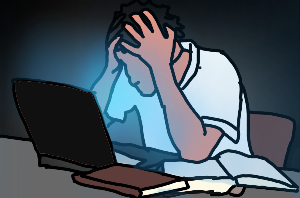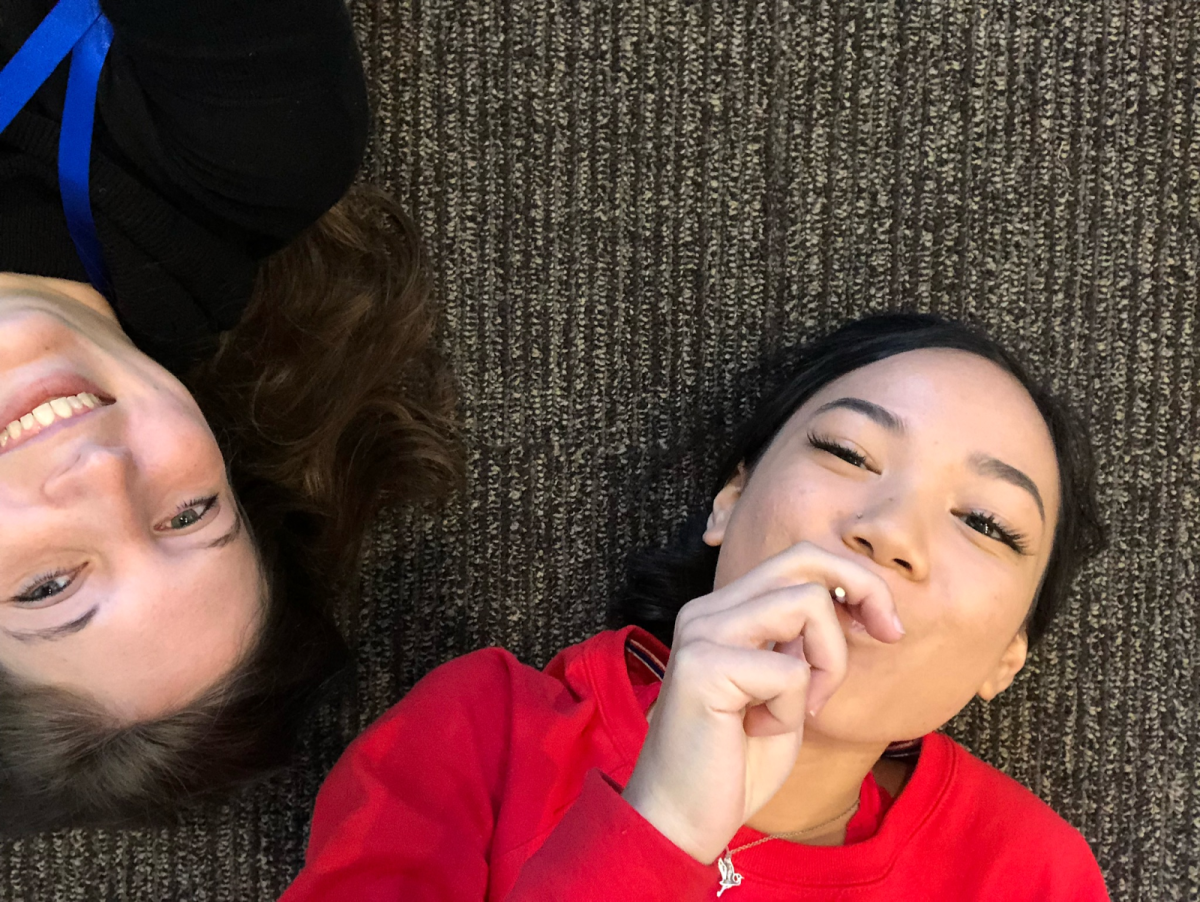When the coronavirus pandemic began shutting down schools across the country, a majority of schools quickly made the switch to online distance learning. The result was immediately different from anything most students have ever experienced. In March, many schools rushed to adjust their curriculums and figure out how to teach online, but many unforeseen consequences came with this shift. At Franklin, we switched to a pass/fail grading system. The pass/fail system had many pros and cons. A lot of students felt that while it was extremely difficult to make the switch to distance learning, an abbreviated grading system helped ease the workload and give students more free time to help their families, study, or focus on their mental health. However, many parents and students also felt that pass/fair grades enabled students to slack off. Students who had worked hard to keep their grades up now couldn’t have those rewards. Online meets started becoming smaller as students realized it wasn’t as important to come to class. That was spring. Now, this fall, this new year of distance learning poses its own set of hurdles.
Throughout the country, as schools were deciding how to return, or whether they even should start school in person, the consequences of distance learning were becoming clear. Students are losing education, mental health is suffering, and we are losing a majority of our social contact and growth. Studies are showing that the loss of education is increasing. One such study, from the Center for Research on Education Outcomes, said that up to eleven months of learning could be lost throughout the lives of young children because of the pandemic. This loss is more prevalent in younger students, but it still is affecting older students. Younger students are impacted more because they are not gaining knowledge as fast as they should. Students in elementary school and kindergarten are learning crucial functions, such as reading and problem solving, much slower than they typically would. A study from The American Institutes for Research and the University of Chicago Consortium on School Research showed that students who attempted credit recovery had lower rates of success online than in person. Many students have also said that they are unmotivated during distance learning. Our four-by-four distance learning system has caused students to have a lot more material in a smaller period. We learn just enough to get the grade or take the test, but a lot of students cannot thoroughly understand the topics enough to keep that knowledge. We are extremely pressured to get good grades, and with that mindset, a lot of students sacrifice the complete understanding of the topic.
Students are also not nearly as engaged in their classes now. A senior from Franklin says, “Being on screens for long periods for me is hard. I tend to get distracted and worn out from looking at my screen.” Because of distance learning and our compacted four-by-four schedule, classes are much larger. The condensed schedule makes it even more difficult for teachers to tailor learning to the specific needs of their students. This causes students to lose interest. Loss of interest was already a problem before distance learning, but the loss is dramatically greater now that many teachers have less of a way to connect with students and engage them.
Distance learning has also increased the equity gap. Many BIPOC families and low-income families may not have access to the same resources like computers and a high broadband internet connection. This resource disparity is further increasing the learning gap, as these students may not receive the same education as others. Many students, mainly students of color, also may have a more difficult time engaging in class as violent and tragic deaths of people of color are being constantly displayed across the country. It is unfair to expect people to focus well when they have to cope with a constant bombardment of trauma. Another part of student equity that many schools have failed to address is that many student’s voices are now lessened or even silenced. Many of the people I’ve talked to have said that they feel like they haven’t been heard from enough. Will Nusbaum, a senior at Franklin, said, “Half the point of school is interaction and having a voice, a lot of times this is the only place students have a voice.” With online school, students lose a large part of their usual forum for discourse. The Student Senate, student-admin meetings, and clubs are made much more difficult or aren’t even happening altogether.
Places for creativity are also diminished. Electives that many students find as valuable outlets for creativity have lost a large amount of their meaning to some students. Classes such as band, ceramics, industrial technology, woodworking, and more, are classes that depend on in-person, hands-on experience. A Franklin senior said, “[Distance learning] takes away most of the socialization and fun about why I’m a band kid.” Some elective classes are adapting to distance learning. The ceramics class has given students clay to work on at home, our own Franklin Post has moved to an online issue, and the band created a graduation music video for last year’s seniors.
Another massive consequence of distance learning is how it has impacted the mental health of students. According to a Gallup poll conducted in June, nearly 3 in 10 parents said that their child was already “experiencing harm to their mental health” because of closures. On top of that, another 14 percent of parents said that their child was “approaching their limits” and “could continue social distancing a few more weeks until their mental health suffers.” This is nearly half of parents saying their children were having issues with mental health, and this poll was done four months ago! Anxiety and mental health issues can also have an impact on entire families. Students may act out, seclude themselves, and not communicate with their families as much. Students are also spending several extra hours on screens for their meetings. Excessive time on screens has been linked to anxiety and depression. It is also much more difficult for teachers to reach out to their students if they are having trouble, and they have to deal with bugs in online learning systems as well. Because of this, many students feel left behind. Grace Beals, a junior at PCHS and a former Franklin student says, “I just switched schools because doing online school at Franklin was just too stressful. I felt like none of my teachers cared about me, it felt pointless to wake up every day just to look at a screen. Two of my teachers stopped sending me links and didn’t put them on Canvas, so I felt like I was forgotten.” Another senior at Franklin said, “I was struggling last year due to depression and that has translated into online learning. I haven’t gotten emails from counselors trying to reach out for support. There’s no support unless you reach out.” Distance learning has shown even more that mental health services are of great importance, especially during this time.
Distance learning has deepened divides and revealed a lot about how our school systems could change. PPS recently reevaluated distance learning and because the coronavirus is still ravaging the world, PPS has decided to keep us out of school until at least the end of January. Because we will be away from school for at least several more months, everyone needs to continue to pay attention to their mental health, schools need to continue supporting underserved students, and schools need to keep their students in mind and help them in every way they can. If students and schools are to continue surviving and succeeding through the foreseeable future, then there needs to be a large increase in the communication that students receive. Administrations also need to have student input so that students can be in the best situation to help them succeed.
A student struggling over distance learning at their computer. The new school system, developed after the Covid-19 pandemic began, has caused frustration for some students.




































